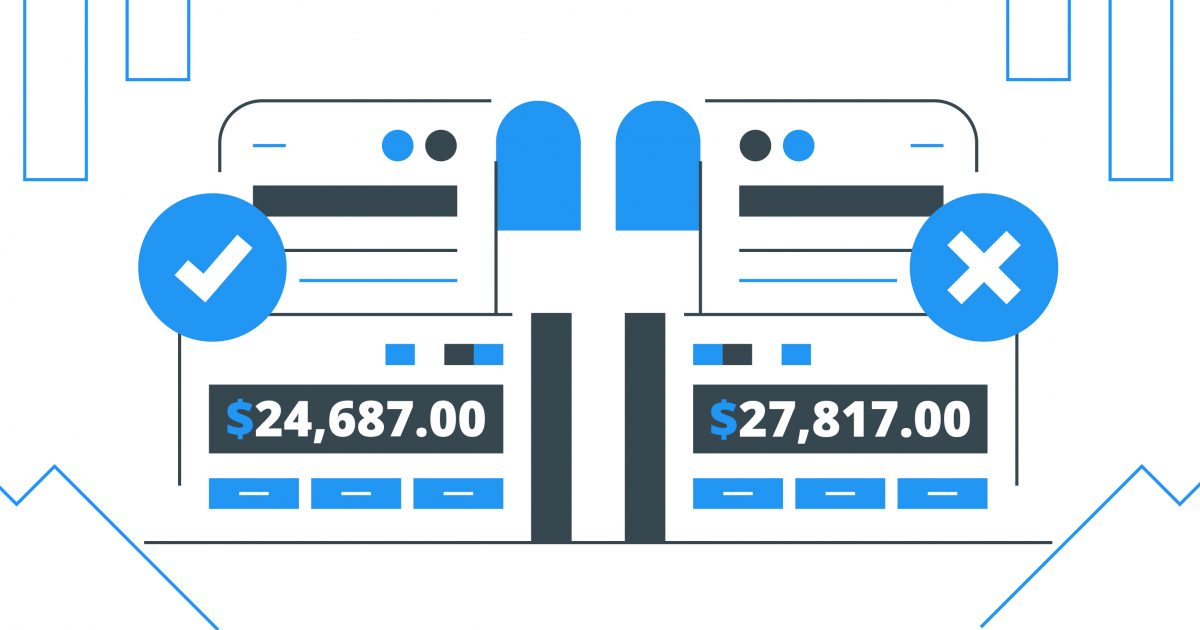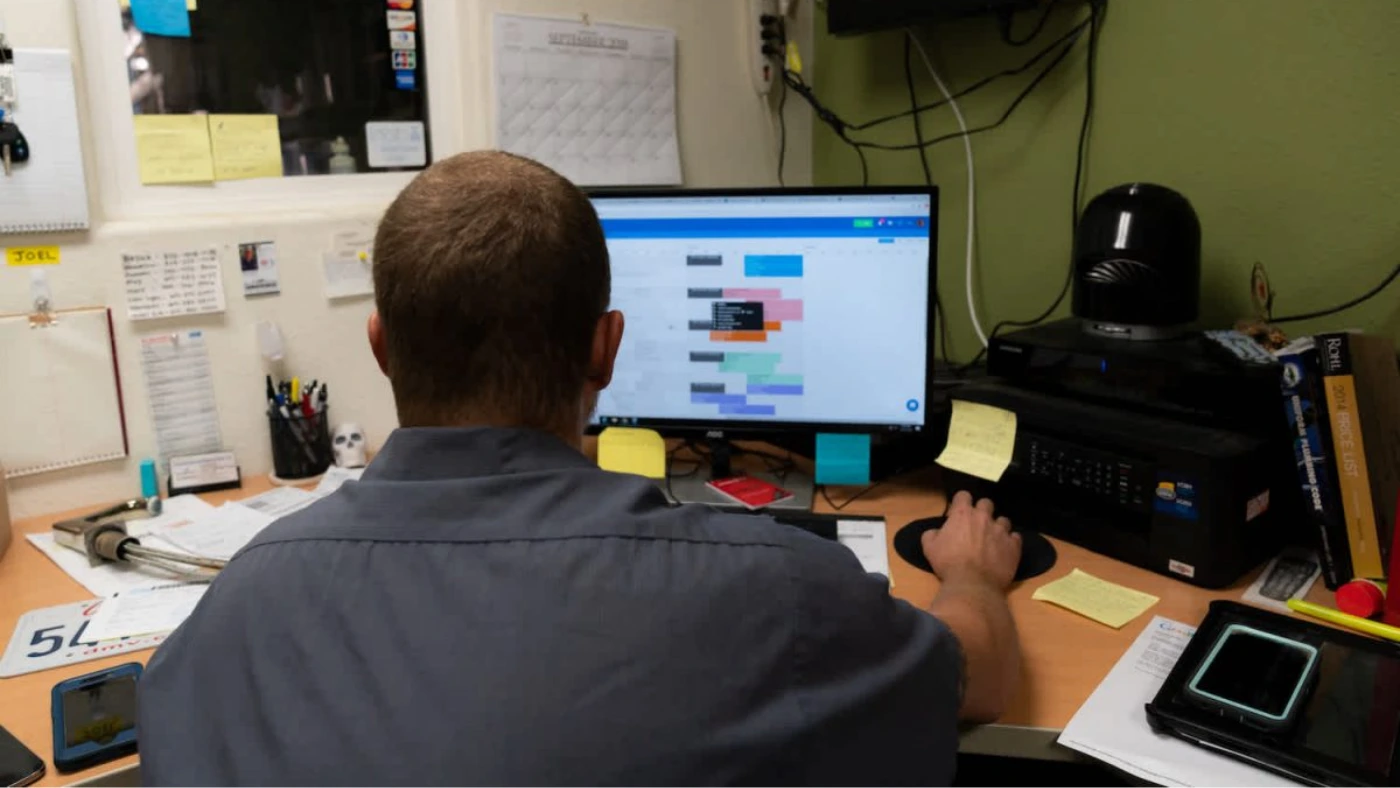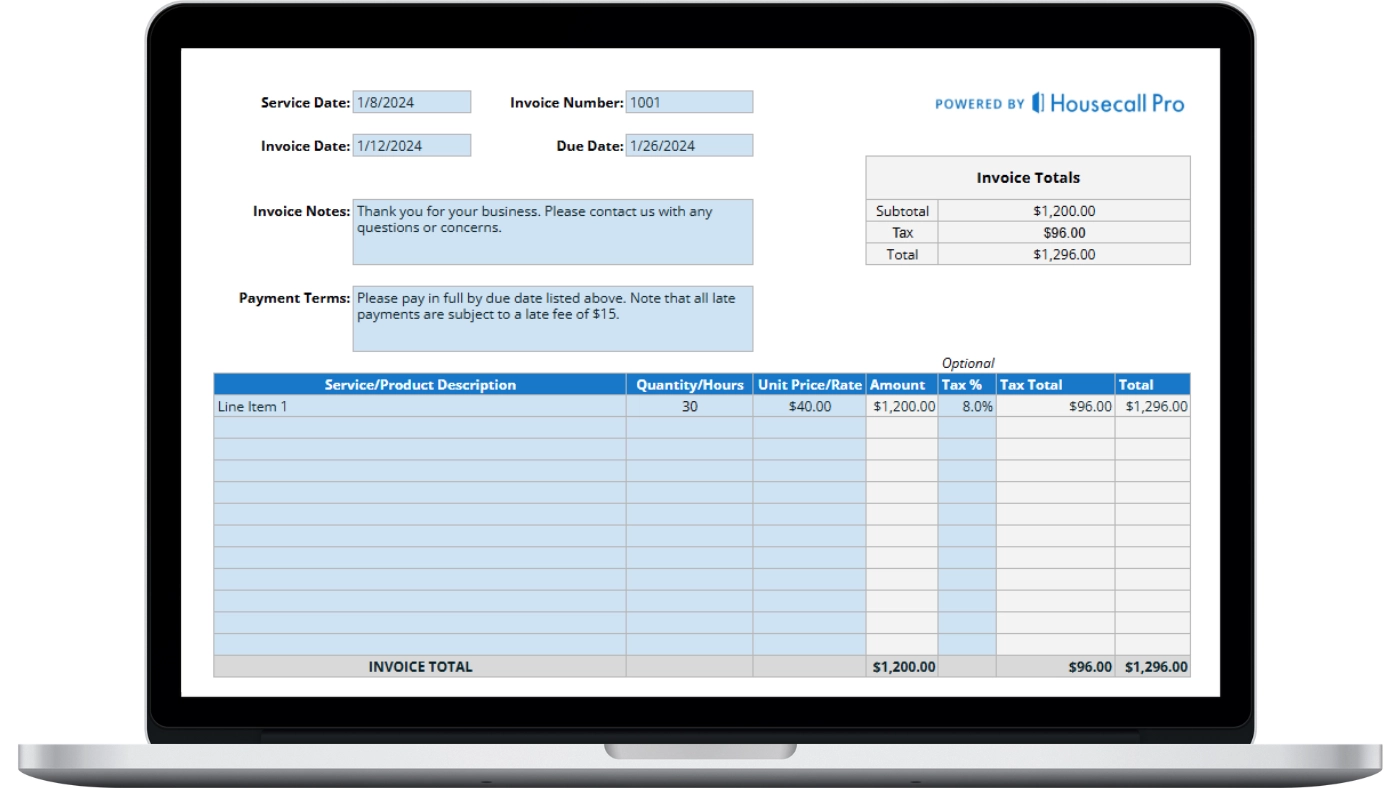Spending too much time on admin work?
Automate your daily tasks and save time with our home service software.
Want to win more jobs with less effort?
Grow your business and send quick quotes with our home service software.

Have you ever had a job go over cost?
Turns out, if you’ve completed 3 or more jobs, chances are you have misquoted a project. Although most customers are justifiably fearful of projects going over cost, many projects stay within estimated cost and some even come in under estimated cost.
In this proprietary data study, we compared 1.1 million final invoices to their initial estimates, showing how many jobs stayed within cost, went under cost or went over cost. We also took a closer look at which industries were the biggest offenders. Keep reading or jump to our infographic for a visualization of the data.
Industries that go over cost the most
Projects go over job cost for a number of reasons. Maybe you started work and ran into some unforeseen challenges with the job or your material costs increased after some pieces were measured and cut incorrectly.
Whatever the reason for going over cost, it often does not sit well with customers, and you can be sure their attention to detail and scrutiny will be heightened and overall satisfaction compromised.
The industries that go over job cost most often are HVAC, flooring, and general contractors.
Considering each of these industries is susceptible to a variety of variables and unknowns, it is easy to see how difficult it would be to accurately estimate these projects consistently. In fact, 69% of all estimates matched the price of the final invoice in our study. Not all industries can boast such precision, however.
The top 3 industries that go over job cost the most often on average are:
- HVAC | 67% of jobs go over cost
- Flooring | 53% of jobs go over cost
- General contractors | 51% of jobs go over cost
Industries that come under job cost by the most
Whether the estimate was purposefully given a margin of safety or the project went more smoothly than anticipated, when an invoice comes in below the initial estimate, customers are pleasantly surprised.
Industries with the most accurate estimates
Estimating jobs is no easy task. With experience comes the ability to better predict when things might drive costs up. If you work on a masonry team, for example, you’ll quickly learn that job sites with limited truck access will mean carrying tons of materials (literally) and that drives up costs.
This is why we applaud the industries with the most accurate estimates. These industries had the highest percentage of original estimates that matched the final invoice amount:
Sometimes in business, you need to absorb some of the extra costs on a project to keep your customers satisfied. This comes with a big and bold asterisk, however, because you must always balance your business’s ability to remain financially profitable.
Some industries don’t have the profit margins to absorb additional costs that weren’t included in the estimate and are forced to invoice the customer for more than initially expected.
Industries with the least accurate estimates
Sometimes our jobs go over job cost, but other times customers see our work and decide they want more of it. Change orders can be a sign of quality work, but they can also be a sign of red tape and additional costs.
In our study, we compare the estimated amount to the final invoice, not accounting for change orders requested from the customer.
Methodology
In our study, we looked at a segment of our pros to analyze a statistically significant number of estimate and invoice combinations. In all, we compared 1.1 million to find the amount of variation by industry, the frequency of difference, and more.
The estimation process may be one of the most overlooked areas for improvement in the field service industry. Many people in the industry look at the estimation process as one of the more boring, administrative tasks, but it doesn’t have to be.
Housecall Pro has simplified the process with our easy to use estimating software. You’ll be able to send estimates, have your customers accept online, and boost conversions of your estimates into paying jobs.











